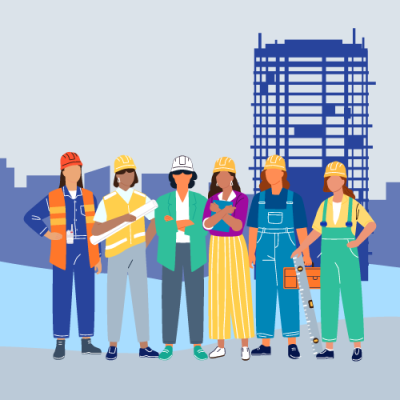Protecting Your Eyesight on the Jobsite
Wednesday, September 26, 2018 Greg Santo
We sometimes take for granted our five senses: sight, hearing, taste, smell and touch. When we lose our sense of hearing or our sense of smell it is usually gradual, and we compensate for that loss. When we lose our vision because of a traumatic event, it is sudden and the effect can be profound. One of OSEA’s long-time employees always begins his training sessions on eye safety by asking, “When do you need eye protection?" The answer he provides is that “when something is headed towards your face”. He then counters, “and when exactly is that?”. Thus the justification to wear your safety glasses all the time.
Each day about 2,000 U.S. workers sustain a job-related eye injury that requires medical treatment. About one third of the injuries are treated in hospital emergency departments, and more than 100 of these injuries result in one or more days away from work.
How do eye injuries happen to workers?
- Striking or scraping: Most eye injuries result from small particles or objects striking or scraping the eye, such as: dust, cement chips, metal slivers, and wood chips. These materials are often ejected by tools, windblown, or fall from above a worker. Large objects may also strike the eye or face, or a worker may run into an object causing blunt-force trauma to the eyeball or eye socket.
- Penetration: Objects like nails, staples, or slivers of wood or metal can go through the eyeball and result in a permanent loss of vision.
- Chemical and thermal burns: Industrial chemicals or cleaning products are common causes of chemical burns to one or both eyes. Thermal burns to the eye also occur, often among welders and the use of industrial LASERS. These burns routinely damage workers’ eyes and surrounding tissue.
- Eye strain: The dependence on smart phones, tablets, laptops and other devices causes an ergonomic issue because of the blue light from these devices. There are blue light filtering glasses that can be used to reduce eye strain for those who spend a lot of time in front of their computer
How do workers acquire eye diseases?
Eye diseases are often transmitted through the mucous membranes of the eye as a result of direct exposure to things like blood splashes, and droplets from coughing or sneezing or from touching the eyes with a contaminated finger or object. Eye diseases can result in minor reddening or soreness of the eye or in a life-threatening disease such as HIV, hepatitis B virus, or avian influenza.
What can workers do to prevent eye injury and disease?
- Wear personal protective eyewear, such as goggles, face shields, safety glasses, or full-face respirators.
- The eye protection chosen for specific work situations depends upon the nature and extent of the hazard, the circumstances of exposure, other protective equipment used, and personal vision needs. Eye protection should be fit to an individual or adjustable to provide appropriate coverage. It should be comfortable and allow for sufficient peripheral vision.
- Specially designed LASER safety glasses
What can employers do to prevent worker eye injury and disease?
- Employers can ensure engineering controls are used to reduce eye injuries and to protect against ocular infection exposures. Employers can also conduct a hazard assessment to determine the appropriate type of protective eyewear appropriate for a given task.
- The use of safety glasses is required in the workplace. Safety glasses are those that have been manufactured in accordance with the standards of the American National Standards Institute or ANSI, and the publication is called Z89.1.
- All three types of safety lenses meet or exceed the requirements for protecting your eyes. Lenses come in three basic types:
Glass Lenses
- Can be used around harsh chemicals
- Are sometimes heavy and uncomfortable
- Are not easily scratched
- Can be made in your corrective perscription
Plastic Lenses
- Protect against welding splatter
- Are not as scratch-resistant as glass
- Lighter weight
- Are not likely to fog
Polycarbonate Lenses
- Protect against welding splatter
- Are stronger than glass and plastic
- Are not as scratch resistant as glass
- Lightweight
- Are not likely to fog
- Are more impact resistant than glass and plastic




.jpg)